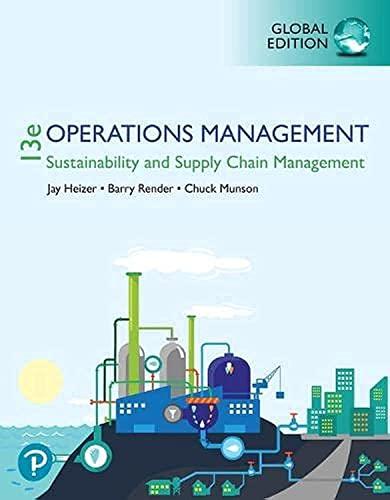A typical retail transaction consists of several smaller steps, which can be considered components subject to failure.
Question:
A typical retail transaction consists of several smaller steps, which can be considered components subject to failure. A list of such components might include:
COMPONENT DESCRIPTION DEFINITION OF FAILURE 1 Find product in proper size, color, etc.
Can’t find product 2 Enter cashier line No lines open; lines too long;
line experiencing difficulty 3 Scan product UPC for name, price, etc.
Won’t scan; item not on file; L01 scans incorrect name or price 4 Calculate purchase total Wrong weight; wrong extension;
wrong data entry; wrong tax 5 Make payment Customer lacks cash; check not acceptable; credit card refused 6 Make change Makes change incorrectly 7 Bag merchandise Damages merchandise while bagging; bag splits 8 Conclude transaction and exit No receipt; unfriendly, rude, or aloof clerk Let the eight probabilities of success be .92, .94, .99, .99, .98, .97,
.95, and .96. What is the reliability of the system; that is, the probability that there will be a satisfied customer? If you were the store manager, what do you think should be an acceptable value for this probability? Which components would be good candidates for backup, which for redesign?
Step by Step Answer:

Operations Management Sustainability And Supply Chain Management
ISBN: 9781292295039
13th Global Edition
Authors: Jay Heizer, Barry Render, Chuck Munson





